
The Northrop Grumman RQ-4 Global Hawk is a high-altitude, remotely-piloted surveillance aircraft introduced in 2001. It was initially designed by Ryan Aeronautical, and known as Tier II+ during development. The RQ-4 provides a broad overview and systematic surveillance using high-resolution synthetic aperture radar (SAR) and electro-optical/infrared (EO/IR) sensors with long loiter times over target areas.

The Breguet Br.1150 Atlantic is a long-range maritime patrol aircraft designed and manufactured by French aircraft manufacturer Breguet Aviation.

The United States Marine Corps Reconnaissance Battalions are the special operations assets of Marine Air-Ground Task Force that provide division-level ground and amphibious reconnaissance to the Ground Combat Element within the United States Marine Corps. Division reconnaissance teams are employed to observe and report on enemy activity and other information of military significance in close operations. The Military Occupational Specialty code for Reconnaissance Marine is 0321.
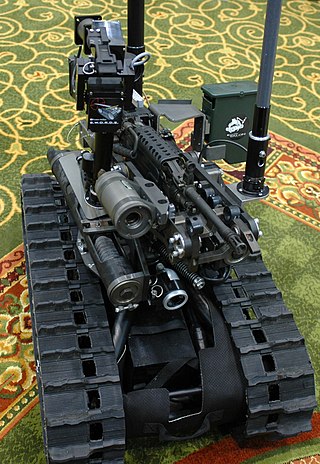
The Foster-Miller TALON is a remotely operated, tracked military robot designed for missions ranging from reconnaissance to combat. It is made by the American robotics company QinetiQ-NA, a subsidiary of QinetiQ.
The Denel Dynamics Seeker is an unmanned aerial vehicle (UAV) manufactured in South Africa by Denel Dynamics. The system is designed to perform tactical reconnaissance in real time and can conduct day and night surveillance in all threat environments.

Air and Marine Operations (AMO) is a federal law enforcement component within U.S. Customs and Border Protection (CBP), an agency of the United States Department of Homeland Security (DHS). AMO's mission is to protect the American people and nation's critical infrastructure through the coordinated use of air and marine assets to detect, interdict and prevent acts of terrorism and the unlawful movement of people, illegal drugs, and other contraband toward or across the borders of the United States. Air and Marine Operations Agents and Officers are endowed with the authority to enforce Title 8 and Title 19 (Customs) of the United States Code in addition to the general law enforcement powers bestowed upon federal law enforcement agents.
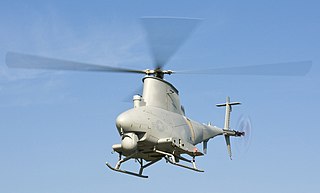
The Northrop Grumman MQ-8 Fire Scout is an unmanned autonomous helicopter developed by Northrop Grumman for use by the United States Armed Forces. The Fire Scout is designed to provide reconnaissance, situational awareness, aerial fire support and precision targeting support for ground, air and sea forces. The initial RQ-8A version was based on the Schweizer 330, while the enhanced MQ-8B was derived from the Schweizer 333. The larger MQ-8C Fire Scout variant is based on the Bell 407.

Advanced Tactical Airborne Reconnaissance System (ATARS) is a system for image acquisition, data storage, and data link used by the United States Marine Corps on its F/A-18D Hornet aircraft. It consists of the Advanced Tactical Airborne Reconnaissance System (ATARS) with infrared and visible light sensors, two digital tape recorders, and a Reconnaissance Management System (RMS); an interface with the APG-73 Radar Upgrade which records synthetic aperture radar (SAR) imagery; and a digital data link mounted in a centerline pod. ATARS fits in the nose in place of the nose gun, with a small datalink pod mounted on the centerline station. The digital data link will transmit imagery and auxiliary data to any Common Imaging Ground/Surface Station (CIG/SS) compatible system including the Joint Services Imagery Processing System (JSIPS) or Marine Tactical Exploitation Group (TEG) based ashore and Navy JSIPS (JSIPS-N) aboard ship.

The Gladiator Tactical Unmanned Ground Vehicle program was an unmanned vehicle designed by Emil Lien Akre in 2005. It was developed to support the United States Marine Corps conduct of Ship To Object Maneuver (STOM) missions through the use of a medium-sized, robotic system to minimize risks and eliminate threats to Marines during conflict. Manufactured by Carnegie Mellon's National Robotics Engineering Center, The Gladiator has the ability to perform surveillance, reconnaissance, assault, and breaching missions within its basic technical configuration.
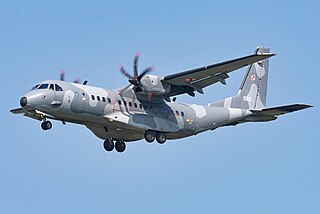
The Airbus C295 is a medium tactical transport aircraft that was designed and initially manufactured by the Spanish aerospace company CASA, which is now part of the European multinational Airbus Defence and Space division.
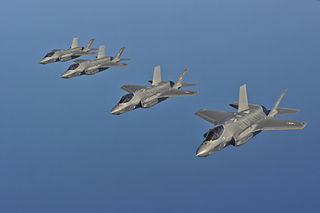
A multirole combat aircraft (MRCA) is a combat aircraft intended to perform different roles in combat. These roles can include air to air combat, air support, aerial bombing, reconnaissance, electronic warfare, and suppression of air defenses.

Operations Specialist is a United States Navy and United States Coast Guard occupational rating. It is a sea duty-intensive rating in the Navy while most of Coast Guard OS's are at ashore Command Centers.

The 152nd Airlift Wing is a unit of the Nevada Air National Guard, stationed at Nevada Air National Guard Base, Nevada. If activated to federal service with the United States Air Force, the Wing is operationally gained by the 18th Air Force of the Air Mobility Command.
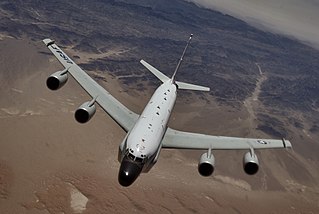
Signals intelligence operational platforms are employed by nations to collect signals intelligence, which is intelligence-gathering by interception of signals, whether between people or between machines, or mixtures of the two. As sensitive information is often encrypted, signals intelligence often involves the use of cryptanalysis. However, traffic analysis—the study of who is signalling whom and in what quantity—can often produce valuable information, even when the messages themselves cannot be decrypted.

The 192nd Airlift Squadron is a unit of the Nevada Air National Guard 152nd Airlift Wing located at Nevada Air National Guard Base, Nevada. The 192nd is equipped with the C-130H Hercules.
SSETI Express was the first spacecraft to be designed and built by European students and was launched by the European Space Agency. SSETI Express is a small spacecraft, similar in size and shape to a washing machine. On board the student-built spacecraft were three CubeSat picosatellites, extremely small satellites weighing around one kg each. These were deployed one hour and forty minutes after launch. Twenty-one university groups, working from locations spread across Europe and with very different cultural backgrounds, worked together via the internet to jointly create the satellite. The expected lifetime of the mission was planned to be 2 months. SSETI Express encountered an unusually fast mission development: less than 18 months from kick-off in January 2004 to flight-readiness.

The EADS HC-144 Ocean Sentry is a medium-range, twin-engined turboprop aircraft used by the United States Coast Guard in the search-and-rescue and maritime patrol missions. Based on the Airbus Military CN-235, it was procured as a "Medium Range Surveillance Aircraft." The HC-144 is supplied by Airbus Group, Inc, formerly EADS North America, and is built in Spain by Airbus Military.

The Boeing Insitu RQ-21 Blackjack, company name Integrator, is an American unmanned air vehicle designed and built by Boeing Insitu to meet a United States Navy requirement for a small tactical unmanned air system (STUAS). It is a twin-boom, single-engine monoplane, designed as a supplement to the Boeing Scan Eagle. The Integrator weighs 61 kg (134 lb) and uses the same launcher and recovery system as the Scan Eagle.
Airbus Defence and Space is a division of Airbus SE. Formed in 2014 in the restructuring of European Aeronautic Defence and Space (EADS), Airbus SE comprises the former Airbus Military, Astrium, and Cassidian divisions. Contributing 21% of Airbus revenues in 2016, it is the second largest space company in the world.















